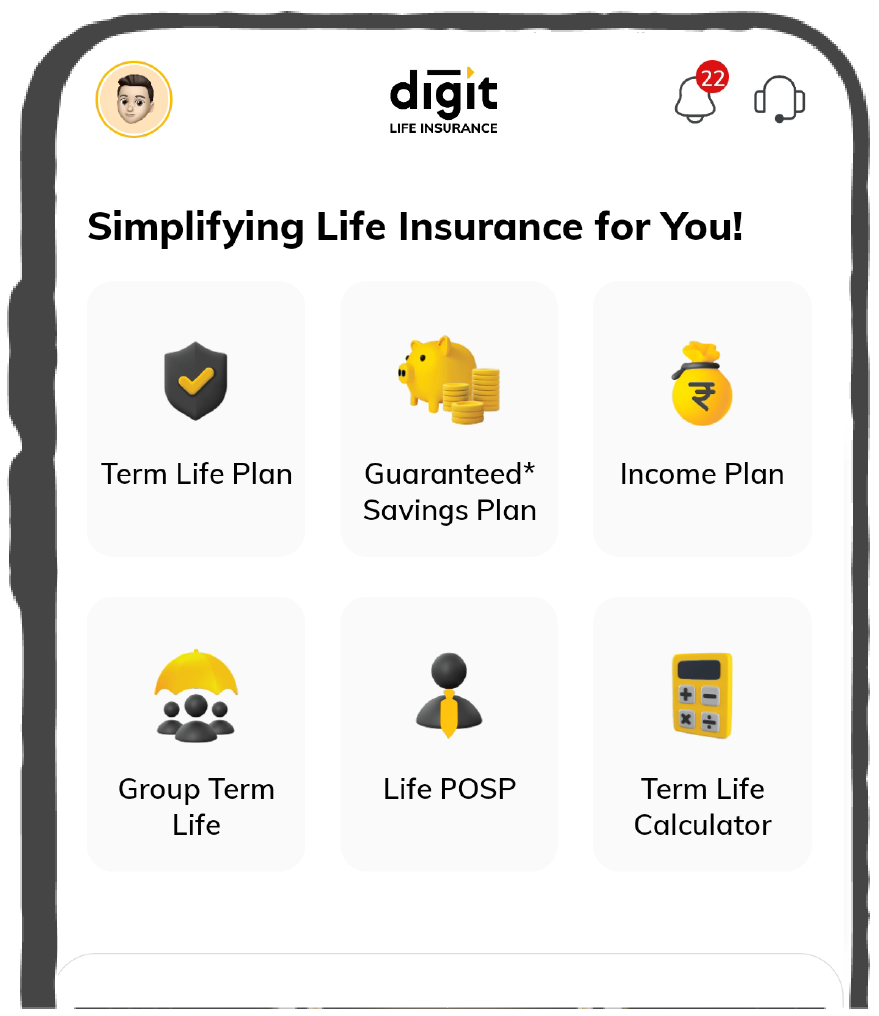Simplifying Life Insurance in India
What are the Best Investment Options for Your Kids' Future?

What are the Best Investment Plans for Children?
1. Investments in Public Provident Fund
The Public Provident Fund is a government-backed scheme that provides you with fixed returns. Hence, the risk associated with this scheme is much lower when compared to mutual funds. The government revises the interest percentage every year for increased returns.
This investment plan usually has a maturity period of 15 years. You can also save substantially on taxes as the principal, benefits, and interest is tax-free. Thus, it serves as a perfect option for securing your kid's future.
Want to know how much your PPF investment will grow? Use our PPF Calculator to estimate your returns over time.
2. Investments via Fixed and Recurring Deposits
Fixed deposits act as a long-term investment option for your child's financial security. Thi is so because the risk associated is comparatively low when compared to mutual funds. You can avail this scheme easily from your bank. Several banks provide you with a separate scheme for your children and allow premature withdrawal of money.
Alternatively, for the recurring deposit schemes, you will have to make investments at fixed time periods. Since the rate of interest is constant, you can rightly estimate the returns from this plan. However, its only drawback is that the returns are much lower when compared to the fixed deposit schemes.
Want to estimate your fixed deposit returns? Use our FD Calculator to see how much interest you’ll earn.
3. Investments in Equity Mutual Funds
Investing in equity funds is a bit risky considering their volatility. However, if you devise an appropriate strategy and select suitable funds for investing, you can make enormous profits from your investments.
You can use this money to fund your kid's education at a top university. Also, your kids can use this money to finance their dream start-ups. So, before investing, you must gather sufficient knowledge about the risks associated with avoiding losses.
Planning to invest monthly in equity mutual funds for your child’s future? Use our SIP Calculator to estimate how much you need to invest regularly to reach your goal.
4. Investment in National Savings Certificate (NSC)
This is a government-introduced scheme from which you can expect fixed returns at definite periods. You can easily register for this plan from your nearby post office branch. The maturity period for this scheme is usually five years.
Additionally, you can claim tax benefits on the principal. This allows you to save substantially on taxes. Moreover, you should keep in mind the minimum investment amount under this scheme is ₹1000.
Curious about your NSC returns? Use our NSC Calculator to plan your investment and maturity value.
5. Investments in Gold
The non-depreciating nature of gold's price makes it a valuable asset to secure your child's future. Another plus point of investing in gold is that it can act as a hedge against inflation. In addition to this, you can get substantial credit against your jewellery to meet the urgent need for funds.
The government has also introduced gold deposition schemes from where you can get money against your ornaments. This way you can easily fund your child's education and other future activities using this yellow metal.
6. Invest in Unit-Linked Insurance Plans
ULIP is a type of life insurance policy in which you can get both coverage and savings options under the same premium. This implies that a part of your policy premium is kept for coverage, and the other part is invested in equity or debt funds. You can easily withdraw money from this fund after the lock-in period to use it in your kid's future planning. These plans are beneficial for both wealth creation and providing financial coverage for your kid's future in case of your untimely demise.7. Investments in Insurance policies
Investing in insurance policies is profitable as it can provide your family with substantial financial coverage either on maturity of the policy or on your untimely demise. All you have to do is pay the premiums on time to prevent your policy from lapsing. Hence, your kids will not have to look up to someone else to finance their careers in your absence. There are a wide variety of insurance plans, which acts as a safety net and ensures availability of funds in the hour of need, provided that all the conditions are fulfilled while raising a claim.8. Investments in Sukanya Samriddhi Account (SSA)
The government introduced Sukanya Samriddhi Yojana to provide financial assistance for the education of a girl child. Before the girl child turns ten years old, her parents can visit their nearest post office to register for this scheme. It is valid till 21 years or till the girl gets married.
However, once she turns 18, she becomes eligible to operate her account on her own. The government revises the interest percentage every quarter for increased returns. Thus by the time she turns 18, she will have enough money to fund her education or marriage using this amount.
9. Investments in Term Insurance
Term insurance is a pure life insurance product that offers substantial financial protection at affordable premium rates. By investing in a term insurance plan, you can ensure that your children’s future is secure even in your absence. In the event of your untimely demise, the policy pays a lump sum amount to your beneficiaries, which can be used for their education, marriage, or any other significant expenses. Term insurance is a cost-effective and straightforward way to provide a safety net for your children's future, giving you peace of mind while you invest in other financial products.
Financial Calculators That will Help You Calculate Your Returns
What are the Things to Consider While Selecting the Investment Option for Your Child?
1. Determine How Comfortable You Are With Taking Risks
The first and foremost factor that you should consider is determining how much risk you are comfortable with. The main reason for this is that the return percentage is directly proportional to the volatility of a fund.
Hence, if you are looking for an increased profit, you will have to select high-risk options. However, if you are comfortable with lower returns and are not ready for many risks, you can choose your investments accordingly.
2. Opt For a Balanced Mix of Investments for More Profit
For enhanced returns, you can go for a mix of investments such that you can avoid increased risks of loss. At the same time, you can also make sufficient profit from your investments. This way, you can get the best of both worlds.3. Consider Your Present Income and Future Financial Goals
It is essential to determine your current income accurately so that you can know how much money to invest. If you do not calculate the same, there are high chances that you will end up investing more which would lead to a compromise in your current lifestyle.
Moreover, you should also determine how much money would be sufficient enough to meet the future needs of your kid. This way, you can invest the surplus money in other areas to ensure a fulfilling life.
4. Take Into Account the Rise in Costs
With time, there is a sharp rise seen in the fees of colleges and additional expenses. Hence, while estimating the investment amount, it is essential to consider the inflation in educational costs.
5. Try to Start Investing As Early As Possible for Increased Returns
If you start investing early, you can get sufficient time for wealth creation. This will allow you to try out different schemes before you select the right one. Additionally, you can go for investment options with higher returns to cover the costs.6. Go for Safer Options in Case of Short-Term Investments
Investing in volatile funds is profitable only if you go for long-term investments. However, if you have short-term plans, you should go for those investment options that are not much volatile and can give you fixed returns.
Considering the number of available investment options for child, you should make immediate decisions to secure their future financially. This will provide several benefits to your kids in the long run.
FAQs About the Investment Options For Child
Why is it important to invest to secure a child's future?
When is it the right time to start investing?
What are some of the best plans for long-term investments?
Can health insurance be considered a part of financial planning for children?
Other Important Articles Related to Investments for Children
Important Articles About Child Insurance Plans




















